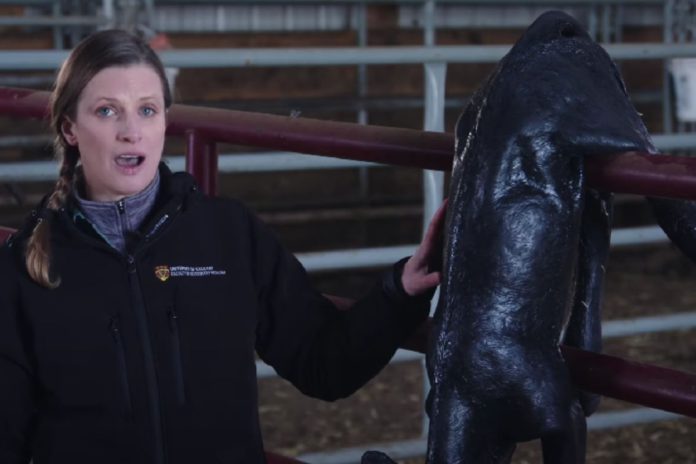According to Dr Claire Windeyer DVSc, associate professor, production animal health, University of Calgary, the day that a calf is born will be the highest risk day of its entire life.
Therefore, farmers must prepare with some equipment that they could use to help keep calves alive.
In a video that the Beef Cattle Research Council produced, she outlined some steps farmers can take to resuscitate newborn calves.
Resuscitating calves
“The first thing we want to do is put that calf in the calf recovery position. That means getting it up on its chest and pulling its back legs up towards its armpits.”
“What this does is it allows both of those lungs equal opportunity to expand and fill with air. Putting those legs forward means that the calf is stable. It cannot just flop back over onto its side.”
“Then, take a clean hand and remove any fluid that might be in that calf’s mouth. We do not want anything in there that is going to be in the way of that calf bringing air into the lungs.”
“If it does not breathe straight away, we can then simulate it by rubbing it vigorously. We can stick a finger in its ear. We can pinch the nose and give their head a little shake.”
“Also, we can use a piece of poky straw to poke the nasal septum, which is that piece of tissue that separates the two nostrils on the inside.”
“We can either splash some water on the back of the calf’s neck or its face or we can squirt a little bit of water into the ear, but not too hard as we do not want to create ear infections.”
“This tricks the body into thinking that the calf might be drowning. So, they gasp, and they fill those lungs with air.”
Dr Windeyer said that if calves are not breathing and do not have a heartbeat, the odds are they are “not viable” and there is “not much we can do”.
“But, as long as there is a heartbeat, I am going to keep trying to get them to breathe,” she explained.
“What we do not want to do is hang calves over gates. This has been something people have done traditionally because you end up getting fluid that drains out of the calf’s mouth.”
“Unfortunately, this fluid is not coming from the lungs like people always believed. It is actually mostly coming from the stomach, so it is not achieving what we think it is.”
“The other thing that it does do though is gravity is then pushing the abdominal content, so the intestines of the calf, down against the diaphragm, actually making it harder for those lungs to expand.”
Care and attention
Dr Adam Schierman DVM said the technique is “very simple” and “easy to incorporate”.
“Every once in a while, while we kind of uncover a stone and realise there is a new, better way to do things that makes more sense.”
Concluding, the Beef Cattle Research Council said that when newborn calves do not get off to a healthy start, it can be stressful.
“However, these techniques will allow farmers to know how to respond quickly and provide timely care and attention to newborn calves that need resuscitation,” the spokesperson concluded.
Watch a video on resuscitating calves:
Other reading on That’s Farming:





